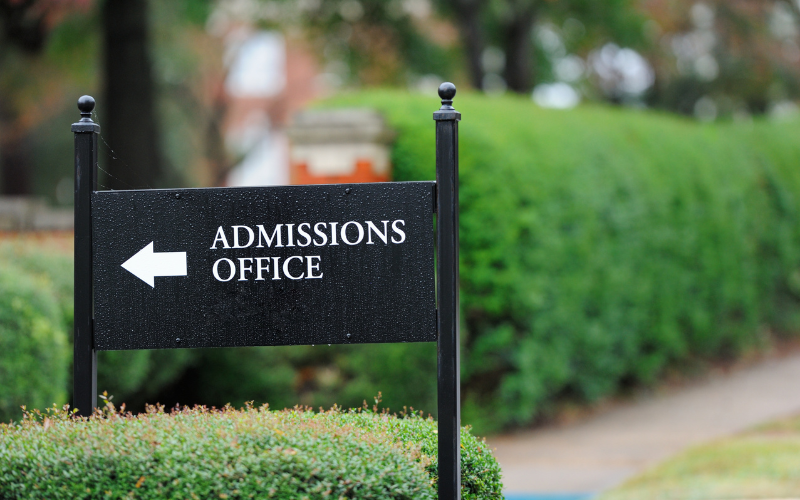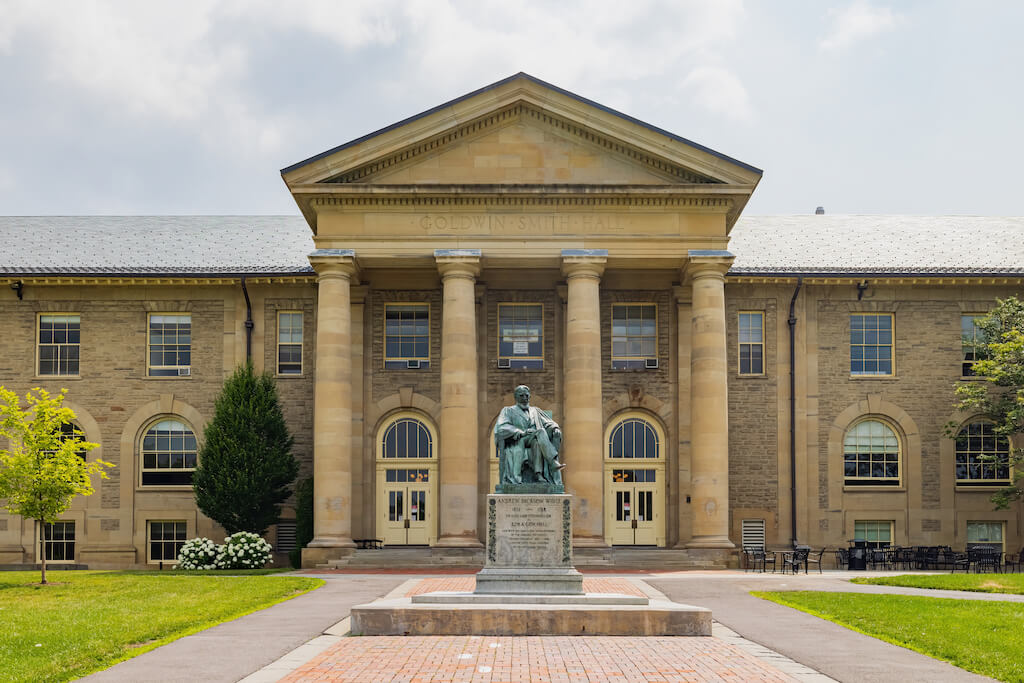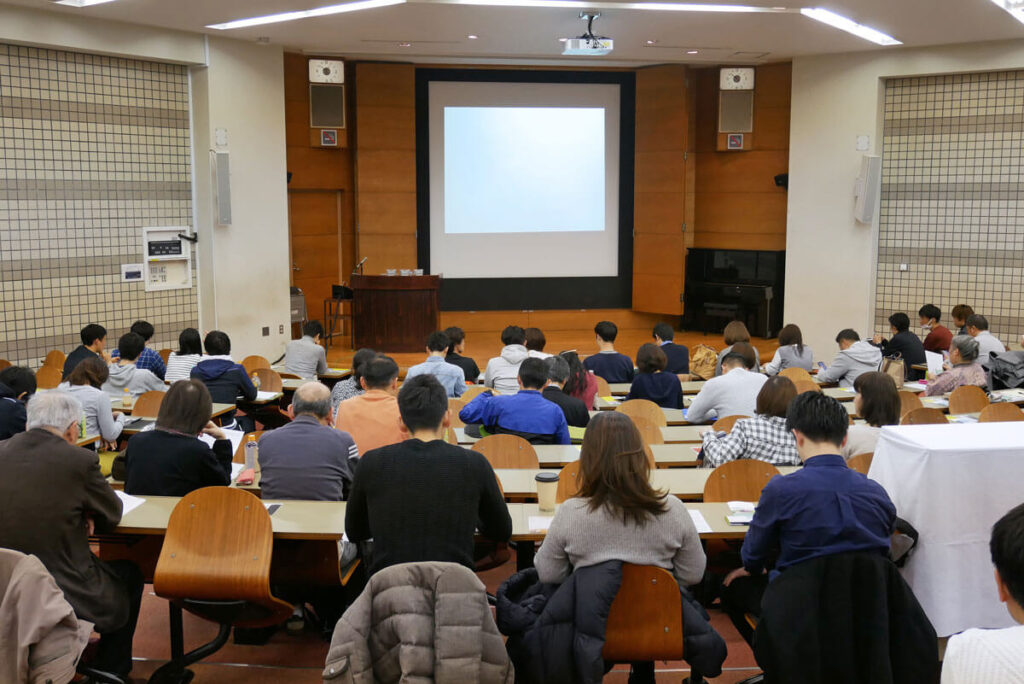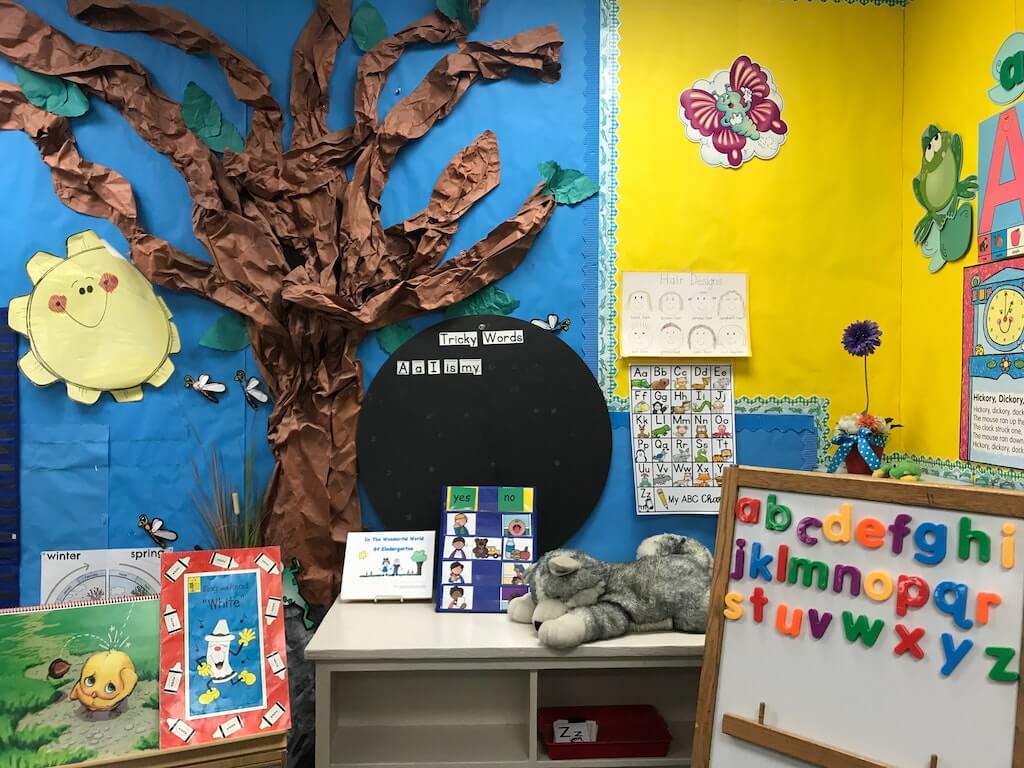Many people talk about transforming higher education. Sadly, most of their suggestions relate to common ideas such as cutting administrative costs, reducing program majors that are underenrolled or no longer relevant, and improving student retention.
When I read the pre-published blurb about Scott Carlson‘s and Ned Laff’s book Hacking College, I ordered it. The book did not disappoint me. Since its availability, Carlson and Laff have discussed the topic at several education-related conferences, on campuses, and at local bookstores.
Organized in seven chapters, the lessons imparted in the book draw on the authors’ experiences working in higher education and writing about it. The addition of one or more student case studies in each chapter aligns their recommendations with student experiences and outcomes. My review will attempt to summarize the recommendations by chapter.
Introduction
Like many, I tend to skim or read quickly through the introductions of many non-fiction books I read. The header for this chapter reads: Introduction (Don’t skip this.) There’s a good reason why. The intro could be the Cliff Notes synopsis of the book itself. If you read this and do not gain an interest in reading the rest of the book, then don’t.
The introduction is informative. The authors describe a 2023 visit to Lincoln Land Community College in Springfield, Illinois. The purpose of the trip was to discuss the difficulties and key success factors of students transferring from a two-year college to a four-year college. After meeting with administrators, Carlson and Laff met with four students for further insights.
None of the four was a first-generation college student. Each of them discussed why they enrolled at Lincoln Land and what majors they had in mind for their academic pursuits. Laff asked them to think about disciplines and majors “more broadly,” how to identify faculty members and off-campus experts by their fields of study, and how to connect with people and open opportunities. He then asked them if anyone on campus had talked to them about those ideas. The group said, “No one.”
These areas mentioned by Laff form the basis of their endeavor to write Hacking College. Carlson, a senior writer for The Chronicle of Higher Education, first corresponded with Laff in 2018 after Carlson published an article about job outcomes for liberal arts students. Laff was wrapping up a 35-year career at Governors State University, located south of Chicago. Laff indicated that the key to a successful career for liberal arts students was the “intersection between students ‘hidden intellectualism’ and the ‘hidden job market,’ which career services are not set up to explore.”.
The two of them met in person in 2020. Laff argued that the college major is a myth. He advocated to Carlson that students should consider an undergraduate degree a Field of Study. If students started thinking about their areas of interest, like faculty consider their specialties a field of study, they could take charge of their college education.
Carlson was initially skeptical, so he decided to sit in on advising sessions at several institutions of different types. After participating, he thought Laff’s perspective was the better way to advise students. From those interviews, Carlson wrote an article for The Chronicle titled “A Crusade Against Terrible Advising.” The article generated discussions between Laff and Carlson with publishers about a book on advising. Carlson and Laff agreed to write a book together, but it’s more than just about advising.
Blank Spaces
Blank spaces are the electives and other open choices that comprise the bulk of an undergraduate degree. These are spaces that a student must figure out how to fill in. Many students consider these spaces as just another hurdle to leap over to graduate. Chapter One is dedicated to the discussion of blank spaces.
Most students are led to believe that the “right major” will lead them to the “right job.” They are seldom shown how the combination of a major, electives, and on-campus and off-campus experiences can provide a successful outcome. The degree itself is often viewed as a job applicant filter and not the means to obtain the job of your career interest.
Carlson and Laff argue that many parents and members of the media are looking for formulas or data that inform their children which majors lead to the best jobs. Helping students find success is not about directing them to extracurricular badges or certificates that will offer job-relevant skills. It should be about undertaking a Field of Study process.
Most students arrive at college with an idea of what they want to do with their lives. They may not have enough social and cultural capital to explain that idea or understand how it exists in the professional world. Students aren’t undecided as much as they are undeclared.
Under the Field of Study concept, students test their ideas about their life’s passion through engagement with people outside of academe and then use the entirety of the academic curriculum to explore their interest.
Most majors require only three or four core courses. The rest consist of category areas with courses under each area, and a certain number of elective hours required to complete the major. All these electives are blank spaces.
Minors require only one or two specific courses and then offer a list of courses to choose from. These are blank spaces as well. If a student has no minor, they have a greater number of blank spaces to fill.
Students then face many choices to complete blank spaces. In many cases, they pick courses that fit their schedules, have popular professors, or are not academically difficult. Without a firm direction, these unrelated, insubstantial courses lead students to complete “empty” college degrees.
Carlson and Laff provide several examples of students who receive advice about Field of Study and the choices that they made to fill blank spaces with more relevant courses and external experiences.
Carlson and Laff argue that success in college has always been about conversations. Their field of Study process proposes a list of questions that students should answer to discover the “why” behind their undergraduate experiences.
The Curricular Maze
Many colleges and parents have embraced the idea that students should select their major as soon as possible. The College Board includes 1,200 major options in its annual Book of Majors, as well as the most likely career outcomes for the top 200 majors. Unfortunately, publications like this enforce the perception that major equals job.
Carlson and Laff argue that most employers care more about the skills an applicant can demonstrate than their college majors. They write that it’s not the college organizational structure that should guide students through the program but the problems they solve as they see the relevance of other programs and majors in their fields of study.
Citing the publication Redesigning America’s Community Colleges: A Clearer Path to Student Success, Carlson and Laff note that if students face confusing options, they should be structured to help them make better choices. The book’s co-authors recommend creating guided pathways.
Addressing criticism that guided pathways did not lead to a more structured approach to advising students about careers, the publication’s authors, six years later, recommended that “colleges should backward map all programs starting with good jobs in fields of economic importance to their communities.”
Carlson and Laff write that “it’s not clear that colleges could be aware of, or even map to, most of the job possibilities and career routes in the vast world of work.” Students need to lead the conversations about their interests and strengths.
Most college advisors receive on-the-job training about the college curriculum limited to the general education requirements, the requirements for majors and minors, and how to work with the degree audit system. They do not know how the curriculum connects to the world of work. Faculty advisors may have some of that knowledge but must choose between spending time working with undergraduates and completing their professional development.
Students often bounce back and forth between the academic advising office and the career center. Carlson and Laff cite a 2018 Strada-Gallup survey indicating that only 22% of students reported using career services “often or very often” before graduating.
According to Carlson and Laff, college completion should not be the only goal. The goal should be to launch a graduate into a promising work opportunity. To do that, we’ll have to change our conversations with students.
The Wicked Problem
Carlson and Laff dedicate an entire chapter to discussing the wicked problem. They attribute the term to design theorists Horst Rittel and Melvin Webber, who created it to draw attention to the complexities and challenges in planning and social policy.
Wicked problems are “grounded in the messy and fuzzy complications inherent in real-world problems, like climate change, border security, or forming social policy to address poverty or health-care disparities.”
“Wicked problems represent the reality outside the walls of academe. We live in a complex, interdisciplinary world, where problems have layers that cut across areas of expertise and zones of culture. The culture of higher education…has long had a conflicted relationship between its rigid departmental structures and the clear need to grapple with real problems across disciplines.”
The authors believe that a better solution for planning an undergraduate education to take on the wicked problem of linking their studies with their career aspirations is to look at a Field of Study framework as a wicked problem.
The Field of Study process is outlined in four steps:
- Step 1 – Clarifying hidden intellectualism and vocational purpose and learning about the hidden job market.
- Field of Study is not interested in job titles or majors as orientation tools. Instead, it focuses on a student’s wicked problem and how the student can work on that wicked problem in the granularity of the hidden job market.
- Carlson and Laff want to take off the blinders of the major and get students thinking about the relationship between their hidden intellectualism, their undergraduate plans, and the hidden jobs out there.
- Step 2 – Conducting a Research Investigative Inquiry.
- The research investigative inquiry is the engine of the Field of Study process.
- The RII needs to begin early in a student’s college career, during the first or second year, before they are locked into a major.
- There are four components to the RII.
- Students need to research who is doing what they want to do or something similar.
- Students need to set up personal interviews, identifying four to five people to interview.
- Students should research the field and bring substantial questions (and genuine curiosity) to the interview.
- Students need to identify faculty across the curriculum and staff across the campus who have similar interests as those experts they are finding in the hidden job market.
- Step 3 – Identifying learning opportunities on and off campus.
- Step 4 – Designing an educational plan.
- Working with their mentors, students can strategize how and when to fit in experiential-learning opportunities.
- Students create their curriculum and become agile learners because they have learned to integrate their education with their experiences and interests.
The Hidden Job Market
The hidden job market refers to “positions and careers that are not advertised on major job boards but are landed through personal relationships and employee referrals.”
According to Carlson and Laff, these positions may comprise as much as 80% of all job openings. The authors expand the traditional definition to include the “occupations found ‘behind the curtain’ in the world of work.” Students can see the possibilities of the world of work when they can see the hidden job market.
The authors write that selecting a major does not clarify a career or guarantee income. Sadly, many conversations on campuses push students to concentrate on selecting majors with various published incomes that will generate a return on investment.
The research investigative inquiry (RII) is critical for its role in acting as a “blue ocean” strategy for each student, making them aware of “unnoticed spaces” in the job market where few of their peers are competing for the same experience. As students go through this process, they build their professional network and acquire social and cultural capital. Historically, one of the biggest knowledge gaps between students from rich and poor families is their ability to build a professional network.
According to Carlson and Laff, most advising and career centers do not discuss the hidden job market. Sadly, the hidden job market offers more opportunities for a wider range of academic interests than the most popular and mainstream majors and large employers.
“Discovering hidden intellectualism and vocational purpose comes first – and that’s hard work,” write the authors. Hidden intellectualism will not likely surface as a job title or college major. The Field of Study process enables students to “contemplate and clarify their hidden intellectualism and motivations, the means to explore the world of their hidden job market, and practical strategies to enter that world.”
The Liberal Arts and Field of Study
Carlson and Laff write that market forces continue to shape higher education. Still, parents and students who drive those market forces do not understand the nature of liberal arts majors and how to apply them to careers. “At a time when low- to middle-income families are looking for a clear crosswalk from major to job, a major in a liberal-arts discipline can seem like a roll of the dice.”
The authors cite a 2013 online survey of 318 employers outlining the capacities employers look for from college graduates: “to think critically, communicate clearly, and solve complex problems; ethical judgement and integrity; intercultural skills; and the capacity for continued new learning.” These are all attributes cited as outputs from a liberal arts major.
Carlson and Laff question whether advisors, career counselors, or faculty are prepared to help students see the hard skills in liberal arts programs, even though the survival of those programs is likely contingent on attracting more students to enroll in them. The authors write that the arts and humanities skills are transferable across the job spectrum and useful in any setting that a student encounters, including their personal lives.
The Need for Hacking
It’s important to note that the concept of hacking is not unique to the computer industry, write Carlson and Laff. “People hack structures and systems — like tax codes, legislative processes, or administrative regulations — to find advantages that benefit them.” Society’s hackers are often wealthy and connected.
Wealthy people hack college as well. Whether private admissions counselors hired by wealthy families, legacy admissions, the promise of family donations, or an application featuring high-cost experiences like service-learning or summer college experiences abroad, these help build an impressive application for an elite college or university. Once in college, wealthy students can leverage their family connections and knowledge of the college to receive internship offers and advice on majors.
Hacking benefits colleges, too. Carlson and Laff write that transfer students are snagged on bureaucratic processes and institutional culture when transferring between colleges. Advisors and mentors must understand the college’s procedures and ask the questions that enable students to work the system.
To fix the broken ladder of social mobility for lower-income college students, Carlson and Laff believe that we must focus on the non-elite institutions that accept low-income students in numbers that dwarf elite college enrollments. These institutions should teach students a process that makes any institution a launching pad for a successful career and life.
The Field of Study process can make that happen. To facilitate a Field of Study process, colleges should modify their support services and resources and orient them toward removing bureaucratic roadblocks.
“It’s not where you go to college but how you do college that matters.”
Visible Students and Agile Institutions
According to Carlson and Laff, most students who walk America’s college campuses are invisible. They move through the system smoothly, but with one major drawback: they are building empty college degrees with no plan for connecting that degree to the life that comes after.
The University Innovation Alliance, a collective of 17 institutions, was established to help colleges solve problems like empty degrees. However, its practices are top-down and not bottom-up or student-centric. Systemized approaches miss the crucial factors that drive real educational success: conversations and relationships.
Colleges must turn their students into orienteers “to be self-directed designers of their undergraduate experiences and their lives.” To accomplish that, students need to find out the relationship between personal, educational, and professional goals and understand the breadth of learning opportunities on their campus.
College orientation should not be about informing students of the rules and regulations on campus. Instead, it should introduce them to the mapmaking skills that they will use in college and throughout their lives. Introducing them to the Field of Study concept is one way to encourage personal academic engagement.
Carlson and Laff write that colleges are slow to make wholesale changes. They do not advocate that the field of study process is the right process for all students. They know that various groups of students on any campus would benefit from a different kind of conversation about college.
The authors recommend that colleges considering a Field of Study approach pilot test it. If a pilot approach is contemplated, the first question that needs to be answered is, which group of students do you want to test this with?
Since Field of Study is problem-based learning, Carlson and Laff write that it may be worthwhile to test it as a course with assignments and deadlines. Making it a course would ensure that students return each week and report their progress toward solving their individual wicked problem which is how to design their undergraduate program.
The course curriculum would cover 12 major areas.
- Set up the wicked problem.
- Understand how to see faculty as Field of Study specialists.
- Understand the hidden job market.
- Find their space in the hidden job market.
- Identify the people working in that hidden job market.
- Prepare for and conduct research investigative inquiry interviews.
- Translate the gathered information into learning opportunities.
- Share what they learned with the group.
- Propose a design for an undergraduate education.
- Devise a plan for creating experiential-learning opportunities.
- Present their undergraduate design to peers.
- Let the plan evolve.
Carlson and Laff propose that there should be two layers of people who guide students through Fields of Study. Layer one consists of supervisors from the faculty or staff. Layer two includes peers from the student body. Student peers are trained by going through the process themselves.
The location of the Field of Study office is important. Carlson and Laff recommend that it be in the library or information commons of the college.
Empty college degrees drive the national conversation about the value of higher education and the lack of skills that college graduates bring to the job, according to employers. Colleges can change the conversations by helping students find and utilize the resources on campus and changing how students perceive themselves and their institutions.
The challenges and opportunities lie in identifying and solving wicked problems. To solve them, students must learn and develop a multidisciplinary, synthetic approach that includes multiple perspectives.
When students have the right conversations, they learn how blank spaces can help integrate their undergraduate plans. “The power is not in badges—it’s in conversations,” write Carlson and Laff.
Field of Study does not require changing the major-minor system of college degrees. It seeks to teach students to look for the relationships among learning opportunities on campus.
According to Carlson and Laff, the major-oriented view of the bachelor’s degree is killing the humanities and fine arts. Students need to “discover the power of a discipline as a lens on the world and see their professors as specialists who can help them discover the world in detail.”
Lastly, the authors write that “wicked problems need an unconventional approach to education. Much of the real work in problem solving will continue to be done by people who can synthesize competing perspectives, work across disciplinary boundaries, ask good questions, and negotiate solutions that can flex and change. That talent development begins when a student starts designing an undergraduate education to meet her future.”
A Few Final Thoughts
As I’ve written in previous posts, I was fortunate to be able to attend an Ivy-Plus college (Duke University)as an undergrad thanks to academic scholarships and financial aid. Much of my subsequent academic and career success was due to my exposure to peers with far more social capital and life experiences. I learned the importance of developing a social and professional network, which I might not have learned at a non-elite school.
Scott Carlson and Ned Laff have shared their knowledge and experiences with Field of Study and an impressive number of actual student case studies where the process worked. The interdisciplinary nature of Field of Study and the steps required to complete the process remind me of a conversation I had with my doctoral dissertation chair at Penn.
The two of us were discussing people who might be able to share related data or research that could be relevant to my research. When I replied that I knew several of the people he mentioned, I said “wow, it’s a small world, isn’t it?”
My chair’s response was simply stated: “No, it’s not a small world. It’s a small socio-economic world.”
While the Field of Study process will likely work for every college student, Carlson and Laff are correct that lower-income students will benefit the most. Linking an undergraduate degree program with work experiences and promising careers will expand the network and career opportunities of students who have completed the process.
Understanding the process will expand their opportunities to enter a career that aligns with their personal passion and academic area of interest. It’s also likely to link them to connections in the smaller socio-economic world.
If there was anytime in the recent history of higher education, where academic and career advising could be integrated in a manner that transforms the traditional process similar to Carlson’s and Laff’s Field of Study process, it’s now. The budgetary pressures created by research funding cutbacks, the demographic cliff, etc., can be offset by designing a process that integrates two departments along with a smart tool like an AI Advising Bot.
I plan to stay in touch with Scott and Ned and hope they write a sequel using case studies from colleges that have implemented their Field of Study process. I’ll be sure to read that book as well.











